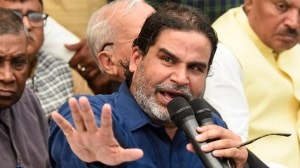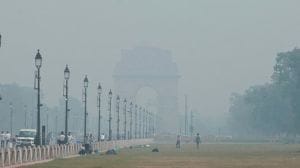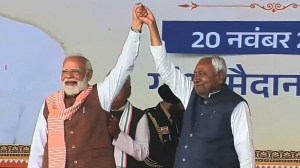Govt wakes up, may relook N-policy of not wiring to global seismic monitor
There is a little known but important umbilical linkage between the monitoring of nuclear bombs and earthquakes and it is this cryptic conne...

There is a little known but important umbilical linkage between the monitoring of nuclear bombs and earthquakes and it is this cryptic connection that is becoming a stumbling block in India establishing an effective earthquake monitoring network, leaving its citizens highly vulnerable to the aftermath of earthquakes.
The phantom of the nuclear bombs, continuing to stall India’s assimilation into the global seismic monitoring network, results in crucial delays and time loss before disaster management authorities can be informed about the magnitude of the disaster.
Today, India neither shares nor accesses real time online seismic information from the world community and has in fact been allergic to any overtures made by international seismologists to bridge this gaping hole. This inward looking policy results in crucial time being lost in estimating the geographical location and power of earthquakes.
‘‘India surely needs to network with the global earthquake community,’’ said Kapil Sibal, Minister for Science and Technology and Ocean Development. ‘‘If this requires a rethink on old issues, the Science ministry will request for a re-look on this pique issue,’’ he said.
According to Sibal, India needs to bring the response time about accurately pin pointing and informing the occurrence of large magnitude earthquakes to less than ten minutes from the prevailing one hour.
But this is a tall order till the policy of sharing seismic data is not implemented at the earliest since data from a wide area outside India’s borders helps in quicker triangulation of the epicenter.
But, why this reluctance on part of India to join global seismic networks? The answer lies in India’s nuclear policy and the country’s aversion to the Comprehensive Test Ban Treaty (CTBT). It so happens that the most reliable and open seismology network of the world is the Global Seismographic Network which is maintained by the Incorporated Research Institutions for Seismology (IRIS), Washington DC, a consortia put together by universities that not only accurately monitors earthquakes at 128 stations worldwide but also assists in the verification of the CTBT by being the ears through which seismic signatures of nuclear detonations are detected by the participating nations.
It is data from this IRIS network and similar networks like Geophone and the United States Geological Service set-up that most seismologists use to quickly ascertain the location and magnitude of earthquakes worldwide.
India has never been part of these networks since it never signed the CTBT and it is really the ghost of the nuclear bombs that has come to haunt the Indian establishment when trying to set up not only an effective seismic network but also the tsunami early warning centre.
‘‘It is a pity’’ that India does not have even a single open seismic station says Rainer Kind, head of seismology at the Georesearch Center, Post Dam, Germany. What this means is that the global community is not connected online to earthquakes recorded in India and nor do they have real time access to any seismic data that is generated in India.
This introverted policy has to give way to a more open strategy. With most of the large fault zones also on India’s international borders, it is very difficult to home in on the exact location of the epicenter since crucial seismic data from outside India is never available when they are most needed in the so called ‘golden hour’.
Gathering earthquake signatures in real time from places far away from India’s own borders is not easy to overcome without joining recognized networks like IRIS.
V S Ramamurthy, nuclear scientist and Secretary, Department of Science Technology, acknowledges this as a vexed issue. Before leaving for Washington DC late last night, he said that ‘‘our existing policy of not sharing online seismic data has to change’’ because ‘‘monitoring border area earthquakes, we need data from a much larger geographical area.’’
He said that India is reassessing its relationship with IRIS and hinted that in the very near future earthquake data of any magnitude 5 and above event could be reciprocally swapped in near real time.
Groundwork has already begun and to augment the already existing monitoring networks through a multi-institutional approach, the Government wants to in the next 24 months, increase the seismic stations to 177, up from 51 at present.
If all goes well, it is planned that national seismic data analyzing facility at the Central Receiving Station of the India Meteorological Department (IMD), New Delhi which already keeps an open ended vigil on earthquakes will be augmented with online real time systems.
An auto location software that needs no human intervention to give a preliminary earthquake assessment is also being procured, says RS Dattatrayam, Director, Seismology at IMD.
Sibal categorically ruled out any possibility of collaborating with Pakistan on sharing seismic data even though the hazard of earthquakes were a shared enemy between the neighbours.



- 01
- 02
- 03
- 04
- 05




























